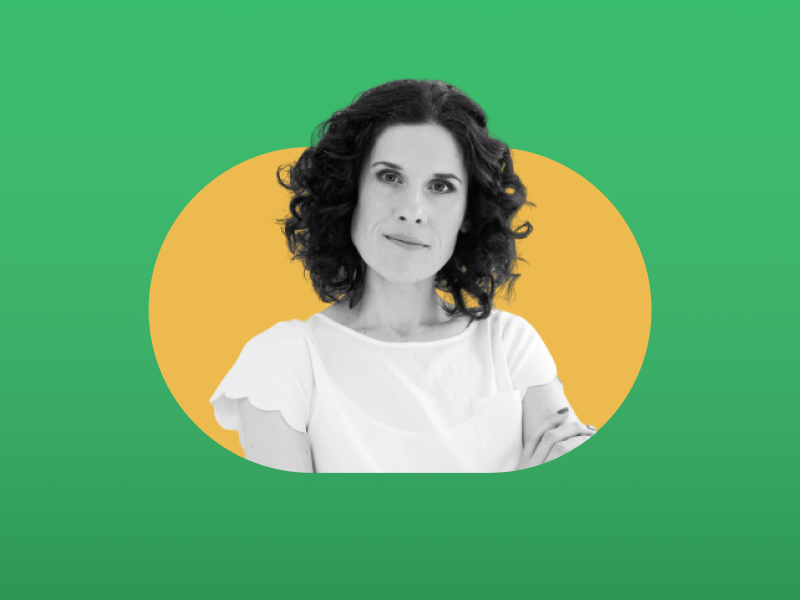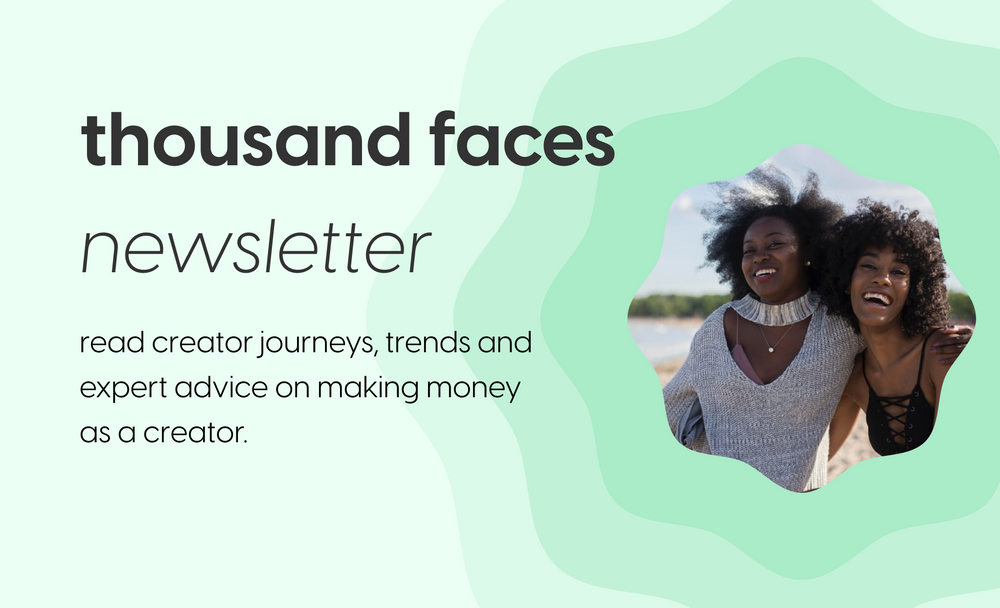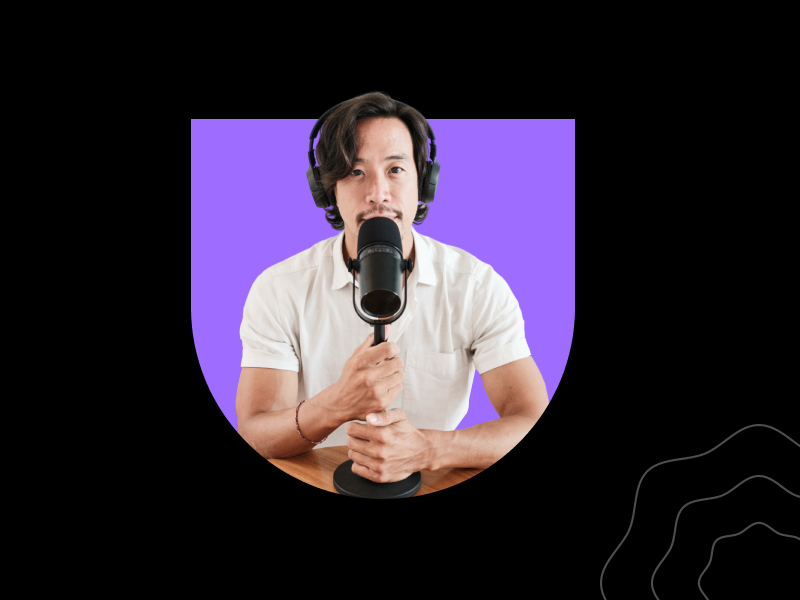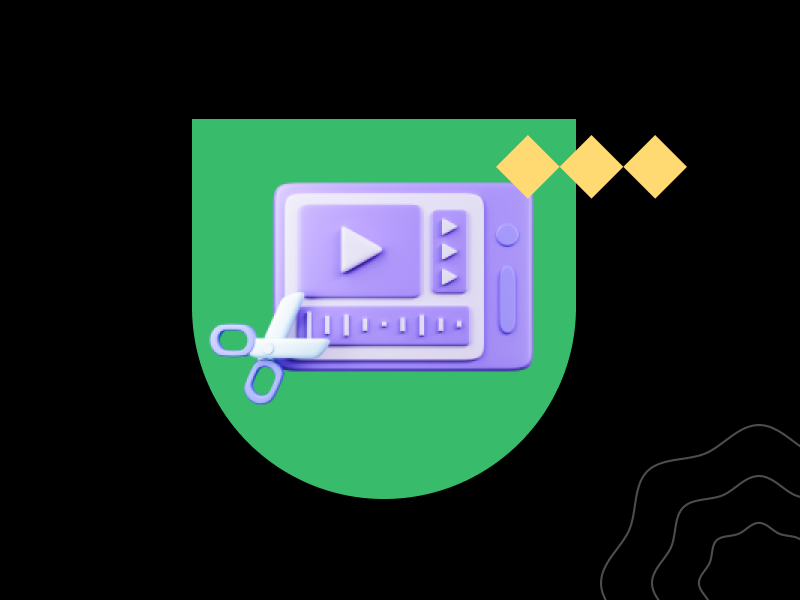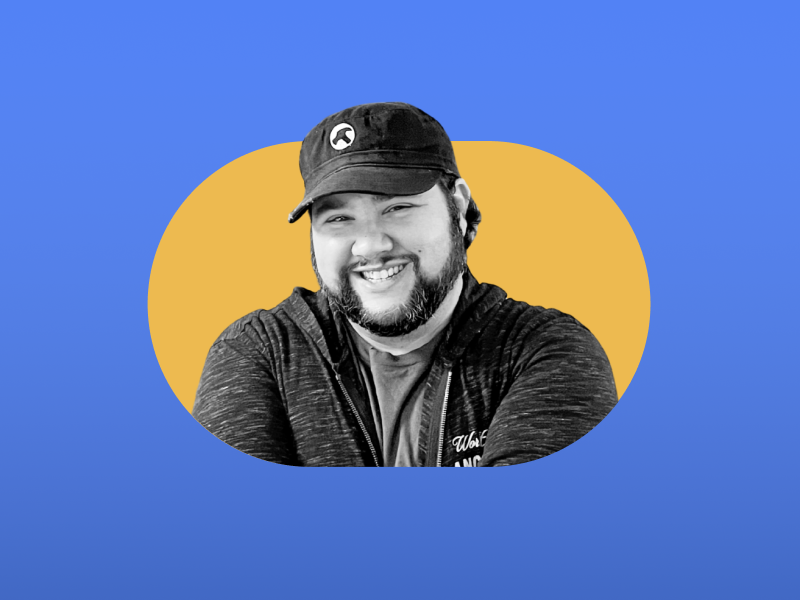How do some creators do so much — from writing short-form content and books to empowering creators? Nika Talbot is one such creator who truly makes us wonder. ✨
So, we decided to catch up with her and understand her journey as a content entrepreneur.
But, First: Who's Nika Talbot?
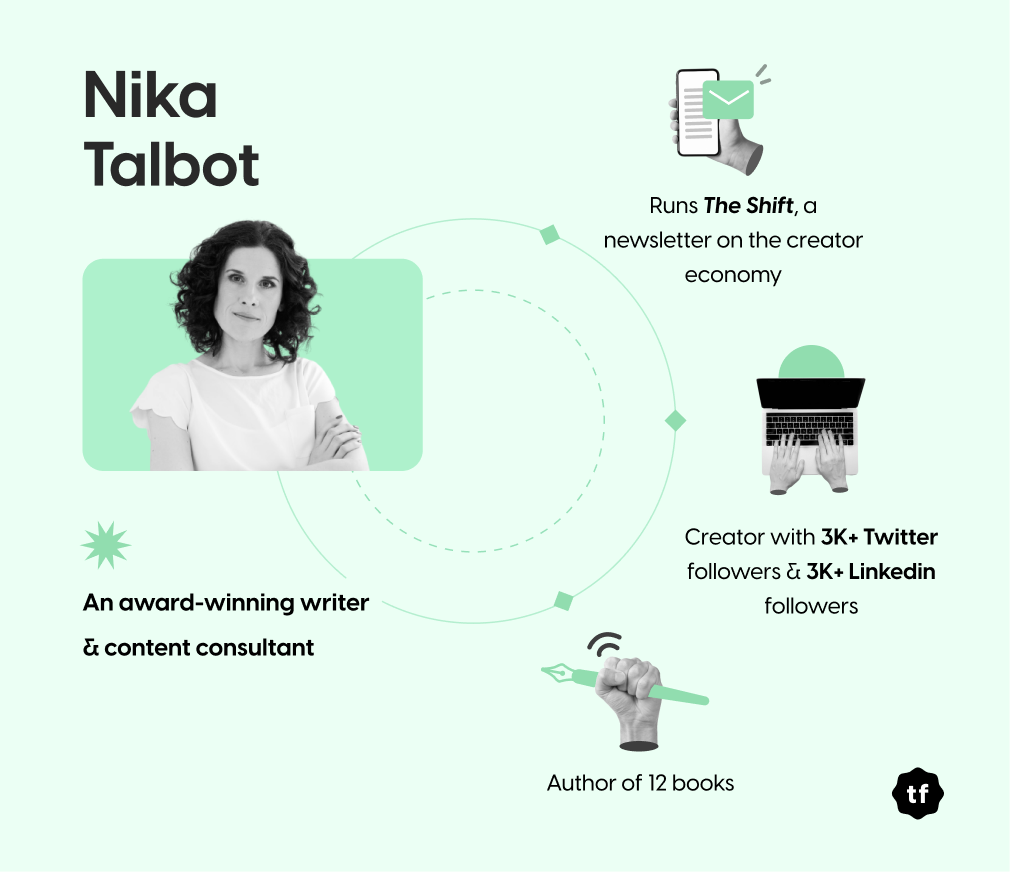
Let’s dive into the conversation. 👇
Thousand Faces Club: Can you tell us about yourself and what made you start The Shift?
Nika: I’m a freelance writer and author with 25 years of experience in journalism and radio/TV, and always had creative side hustles. I started The Shift during the lockdown as a sanity project and a way to explore the booming creator economy, which fascinates me — also to grow my skills as a creator, explore industry trends, build my network, and as a discovery vehicle/funnel to attract like-minded clients for my copywriting biz. There’s been a shift in trends since the pandemic – the future of work, the rise of remote work, the digital entrepreneur/solopreneur side hustles, a change in values (time and freedom over money and climbing the corporate ladder), and a shift in power from employer to employee. I wanted to create a space to explore this, collaborate, experiment, and share a woman’s perspective on solopreneurship.
Also, I have a teenage daughter who is navigating the online space.
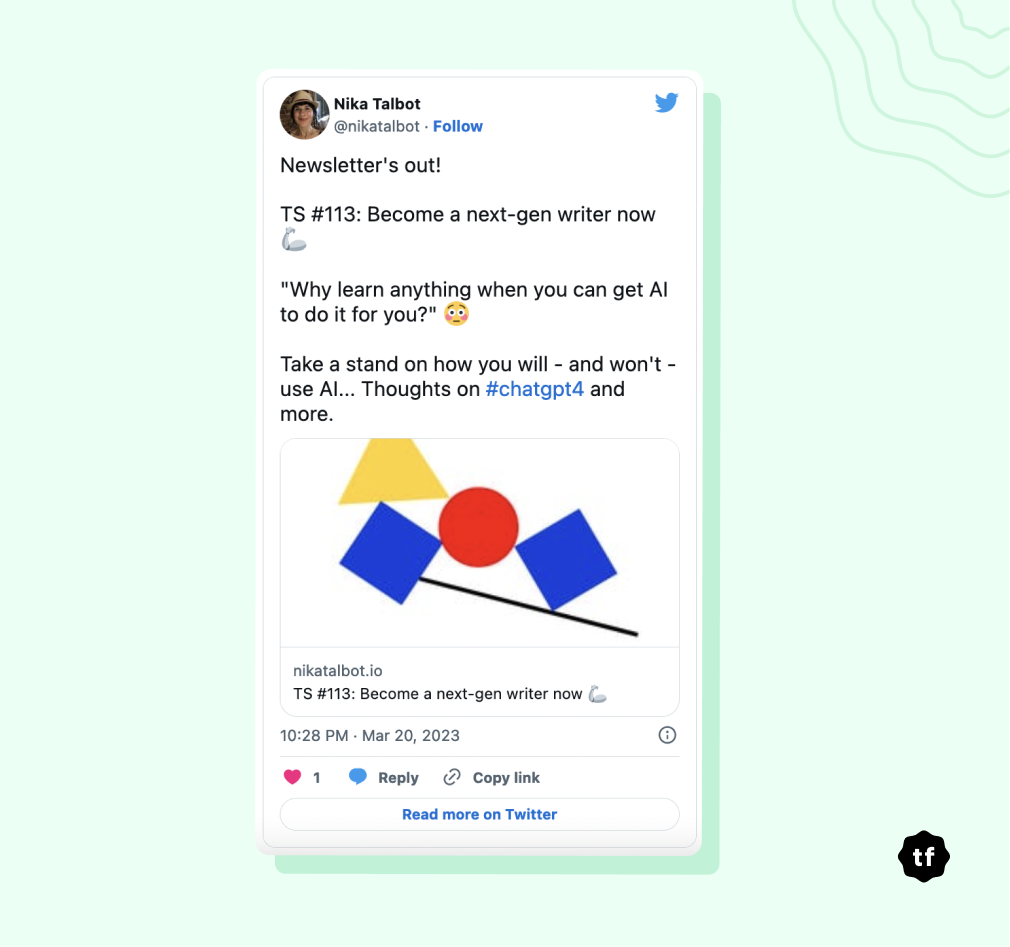
Thousand Faces Club: In 5 words, how would you define The Shift?
Nika: A woman’s guide to solopreneurship.
Thousand Faces Club: Many creators struggle to go from 0-1. How did you get your first 1,000 followers?
Nika: Publishing consistently and using one platform — a weekly newsletter on Substack and sharing helpful, inspiring information. Treating it like a business. Reaching out to other writers and using my existing networks to promote and share work. Doing courses and experiments like Ship30for30 digital writing to learn in public. I try to focus as much on the distribution as creation — online business is mostly marketing, so LinkedIn is my primary platform, but I use Twitter too. Also, sharing other people’s work and ideas, collaborating, and cross-promotion when possible. I figured I'll achieve my goals if I help others get where they want to be.
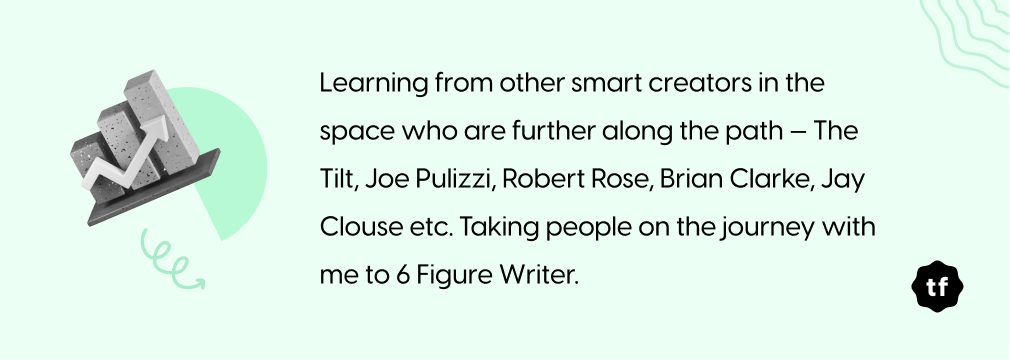
Thousand Faces Club: As a creator, how do you approach distribution, and how do you distribute The Shift?
Nika: I repurpose content as much as I can, and keep it modular so I can share the newsletter across socials and break it into links and sections rather than a long essay. For e.g., a weekly post contains TS Hot 5 🔥 – links I share on social the following week and tag the people mentioned – the network effect usually generates some conversation. I use Substack network — Notes, Chat, blog and newsletter, and I also republish on my site and Linkedin Newsletter tools.
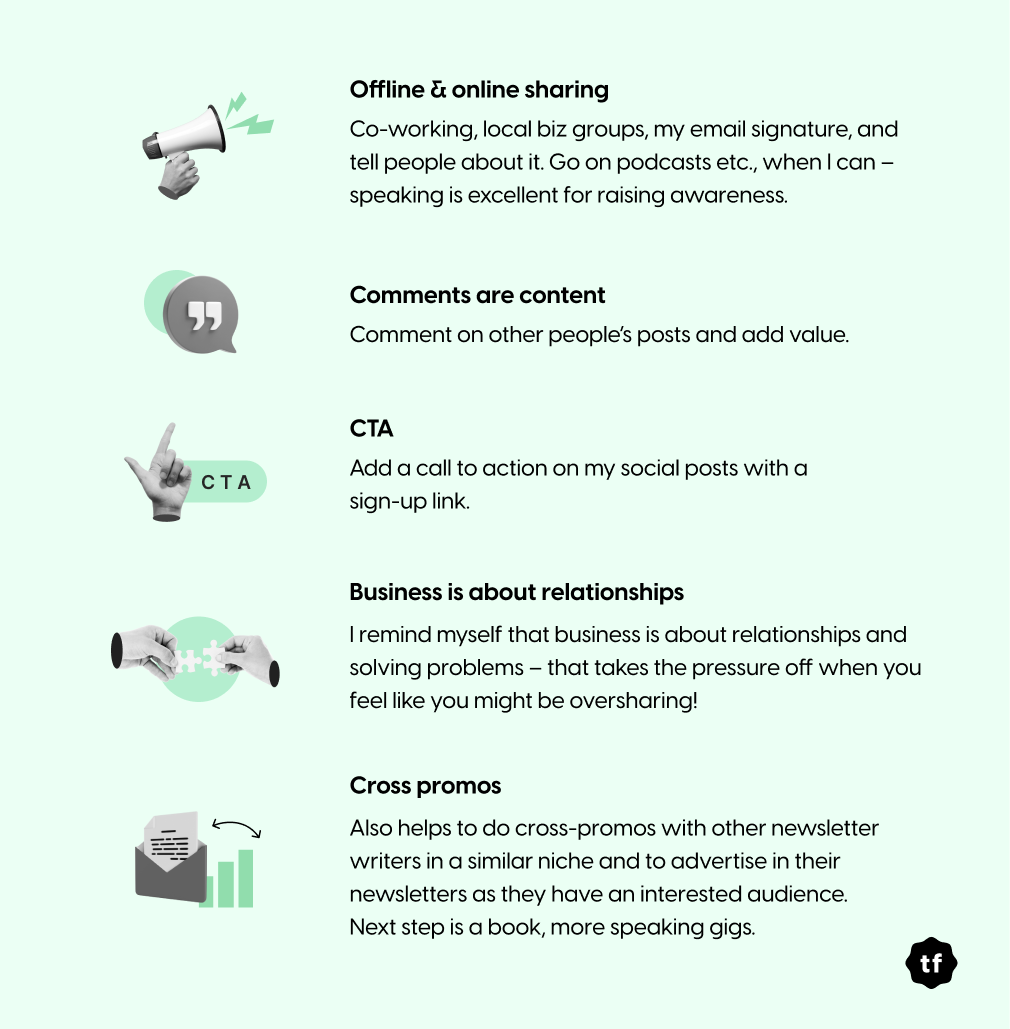
Thousand Faces Club: You write a newsletter, consult, and create on Twitter and LinkedIn — how do you manage your time?
Nika: Not easy! Try and batch time — do certain tasks on certain days, e.g., not writing and editing on the same day. Mornings are for deep work, no calls/meetings if possible, unless on client days and PM for social work, calls, meetings. Start my day with exercise/morning routine —writing, reviewing goals/intentions, then a ritual at the end of the workday. Big on rituals and creative visualisation. I use Pomodoro and Brain.fm when I need to focus and Airplane mode. I do as much offline as possible — walking calls/meetings/podcasts — gives me more energy than sitting at a desk all day. That defeats the point of self-employment. I have set days for client work (normally, Tuesday to Thursday). I try to keep Fridays free for my personal projects and life admin.
If I can get the difficult stuff out of the way at the start of the week, it frees up energy — writing my newsletter on Mondays and then using that content to create social posts. So, you have a plan for each day. Justin’s Welsh’s Content OS course is an excellent resource for this. It’s about creating a system that works for you.
Thousand Faces Club: What are some of the challenges you faced when you started creating content?

Thousand Faces Club: Right! And how did you overcome them?
Nika: I have systems 👇
Systems for ideation: I save useful links in Pocket for curation and Inoreader RSS tool to find good content. I subscribe to lots of great newsletters and have Google Alerts set up for keywords.
Free vs. paid content has been a challenge: It's tricky to decide what goes where with a paid subs model. I decided to use free posts to cover industry trends, curation, top of the funnel (to attract new readers), and to save the personal posts, my progress, behind-the-scenes, deep dive how-tos for paying subscribers. Paid is a different product (not more of the same content), so I offer a consultancy call and the opportunity to run classified ads, voice notes, access the archives etc. It’s a work in progress! I will also bring in classified ads and more affiliate links.
I find Substack’s business model challenging: It doesn’t make a lot of sense to build a content business based on a small number of paying subscribers; so I look forward to seeing what more they can do to help, e.g., the right kind of ad integration. Plus, newsletter bundles will be exciting.
I will also create some video sessions to offer as a standalone product. Doing market research first to see what people want and need – before I launch any products – it has to be audience-led.
Also, I intend to generate income using affiliate links, for e.g., books, events, and courses.
Thousand Faces Club: What are the challenges the creator economy faces right now?
Nika: It’s a new and fast-growing area, so it's volatile and finding its feet. Some challenges include:
Investment slowdown, for e.g., Substack pulled out of their last funding round and is now crowdfunding. Some platforms have dropped their newsletter platforms — Twitter's Revue and Facebook's Bulletin. But new creator tools are coming.
Sustainability: Carbon emissions – all this content we are creating, the power/servers required. We should be mindful of this and not store too much content in the Cloud.
Web3 isn’t that user-friendly yet — for mass adoption. The instability of crypto makes it hard to know what to invest time, money and energy in — all a bit of a wild west, as is AI! We need governance and guidelines around usage.
Burnout: creator burnout is real. Lack of education/training for this as a career path and business — teaching people how to build sustainable creator businesses based on an audience/platform they own rather than relying on constantly changing social media.
Some young people come into creator economy without any corporate/business experience. It helps to do other things first and have some business experience.
AI insanity: the volume of content that will hit us over the next few years is overwhelming and causing uncertainty and stress. So there should be better guidelines as to how we will use AI responsibly. On the upside, real human-made content will become more valuable!
A broken media model — Based on advertising, views and impressions, clickbait, and not enough innovation, e.g., products – so it’s finding ways to innovate and reinvent media and journalism to make it more sustainable, including paying writers decent money in a world of free content.
Check out the services Nika offers. 👇

Thousand Faces Club: Your site says one-woman show! Since you handle operations, research, creation — pretty much everything alone, how do you ensure you get enough time for yourself? How do you avoid running into creative burnout?
Nika: Not easy! I love writing my newsletter and am always thinking about work, reading stuff, and listening to podcasts — my phone is an extension of my hand, which doesn’t make it easy to switch off. I set boundaries with offline/online time, being in nature and exercising as a priority. I focus on what’s important on the to-do list and things that will move the needle, usually content strategy, talks and meeting people. I set time aside to work on my business rather than in it — monitoring trends, network, attend conferences, events etc. This is a break as it’s a change of routine, and travel energises me. Social media is a distraction but also important, and I do it for clients, so I can’t avoid it entirely. So now focusing my time on ONE platform – LinkedIn, for a specific time period e.g., 45 mins a day to post and comment/share others’ work. Quality over quantity. Being more strategic – having a list of 10 people in my industry that I’d like to work with and learn from. Also letting go of the addiction to reactions — getting caught up in whether people like or comment on posts. Most folks don’t; they are lurkers! But it doesn’t mean they haven’t read and appreciated your post. I use scheduling tools like Buffer and Hootsuite to save time and avoid distraction.
Also, I try to take regular sanity breaks, a day off, spa break, walking, and family time to recharge my batteries. Half the day online, half offline (PMs) is a good balance for me. And I’m happier to start earlier to get that done, say 8 am to 1 pm.
I’ve given up on ‘work-life balance’, which doesn’t exist, but I can have better boundaries and manage my time and energy with systems — for e.g., a content system. Small things like having your phone on airplane mode, no notifications when working also work. Not checking email all day — that’s a big time suck. Having a proper alarm clock rather than my phone by the bed is another trick.
I have simplified my life as much as possible to focus on what I want to do — build my business, create, make and help others build their dream biz. All I need is a laptop and phone, really. And blue skies and sunshine!
I prefer Dolly Parton’s approach to work when she says, “I’m burning up, not burning out!”, i.e,. she loves what she does so much it doesn’t feel like work. I’ve made that my mantra — she’s a huge inspiration to women.
Check out a post from Nika’s newsletter. 👇

Thousand Faces Club: Got any advice for beginner newsletter creators?
Nika: Don’t worry too much about your tech stack — just choose one and get started. It doesn’t matter which platform you use until you send around 100K emails daily. Learn how it works and network with the community — the network effect. Create a content system that works for you and think strategically about it, e.g. your content buckets – 3 topics you will stick to and keep it focused. What kind of content will attract new clients (if that’s your goal) vs attracting other writers? Try monetising as early as possible to stay motivated and think about products you can develop – ebooks, email courses, video skills sessions – based on your skills and training others would pay for. If you’re unsure, ask your target reader what would be helpful.
Pay attention to people’s problems, struggles, and questions they ask you — do market research, and ask your readers what their biggest struggle is (welcome email is a good place for this, start a conversation).
At the outset, you will have to do things that don’t scale, e.g., free content, reaching out to your readers personally, being super niche to build a relationship and community. Once you’ve established audience you can broaden and talk about other things.
Plan some content in advance so you’re not writing and posting in the same week — it helps to have an evergreen content bank.
Niche down as much as you can to establish expertise — think about the journey and transformation, A-B you want to take readers on. Your tone of voice and how you want them to feel after reading your content.
Also consider visuals and branding as part of this. Make your newsletter look nice and a pleasure to read, say white space, short text etc. Respect people’s time. If it’s modular content, you can use it to create social posts for the week.
Having a ‘season’ for it i.e., seeing it as a project you may not do forever, can free you up mentally. Commit to, say six months, and then review progress and see what needs tweaking.
Work on your mindset – it’s a huge part of entrepreneurship. You are writing THE ultimate newsletter for X topic. What would that include? What would be in your dream newsletter? For e.g., I’d love one with more creator jobs and collabs. Then, go create that for others. Often, you are solving a problem for yourself, which then helps others.
Remember it’s not YOUR newsletter – i.e., about you. Share industry trends, recommendations, reviews, interviews – stuff people will find helpful and inspiring, and bring in your products and services later. At the end, you can say, “Here are 3 ways I can help you…consultancy call, buy my course/book etc.” But do share personal stories and anecdotes where relevant as that engages readers.
Curation — are the links practical and actionable or just interesting? Can people take action after reading your newsletter?
Also, it helps to write FOR the creator, not about the creator economy – I try and keep that in mind, that I’m writing to ONE person, my persona, and keep it conversational and human. Read work aloud before publishing it.
Set mini goals and quarterly reviews to keep you on track.
Get support — we can’t do this alone! Join or start a creator collective/mastermind — we are the sum of the people we spend the most of our time with.
Thousand Faces Club: What are your 2023 plans for The Shift?
Nika: Keep going, but be strategic with my content – the free vs. paid offer, more affiliate deals, cross-promotions, and newsletter ads. I'll focus on skill sessions and spend more time on outreach and distribution; this year, my focus is more on content creation and audience building.
Productising – market research to see what people want and need so I can create digital products. Explore different business models for writers and check out Sparkloop’s recommendations tool, Partner Network, and Swapstack for sponsorship/recommendations.
I intend to put myself out there more, saying yes to collabs and speaking opportunities, entering awards, and reaching out to other creators.
I also need to find some secure, well-paid client work that complements what I’m building, as financial insecurity doesn’t help the creative process. I need to know the basics are covered, especially, because I live in an expensive country.
I'm happy to mix client work with my creative work as I can learn what problems people have that I can help fix. Working on your own as a creator can be isolating – so, more coworking and community, creating a local creator collective.
Going to more conferences like CEX and You Are The Media to network. It’s all about networking!
Keep in mind (and pinned at eye level) that I want a sustainable, 6-figure content business I can run from anywhere. I remind myself of that daily, and it informs the decisions I make, for e.g., I need to focus on building my business around the lifestyle I want.
Subscribe to Nika's newsletter. 👇


